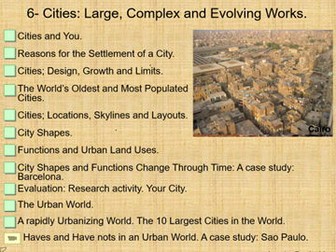Bundle
From the Shelter to the City
<p>This is a cross curriculum course of introduction to architecture and urban geography. At its center there are environmental issues, construction solutions and historical processes in aesthetic and cultural terms.<br />
It is a practical course that offers a general introduction led by a general power-point<br />
presentation with texts, pictures, drawings, audio-slide shows as well as listening<br />
and writing activities. The materials are mainly student and class centered<br />
presentations that place understanding and discussion at their center. There is an<br />
special interest in providing visual material that enhance the comprehension of<br />
reading and listening texts. Every unit provides some clues to develop extension<br />
activities, research projects, ICT presentations or handmade models.<br />
Throughout the development of each unit, students will work individually, in pairs<br />
and in teams. The quality and accuracy of their projects, presentations and<br />
contributions will provide consistency and coherence to these introductory materials.<br />
The time required for the development of each unit will vary according to the<br />
extension given to practical and research activities.</p>








